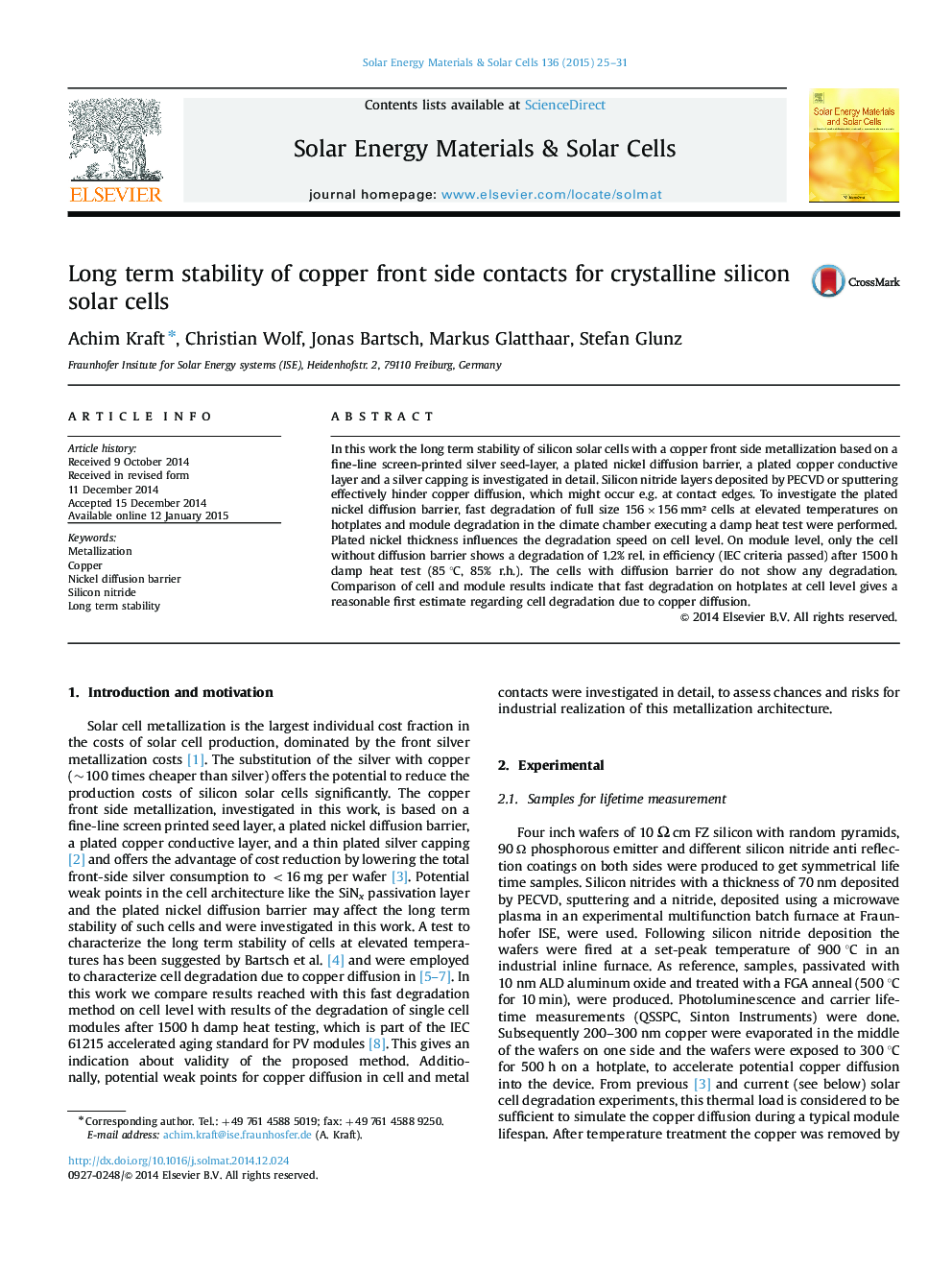| Article ID | Journal | Published Year | Pages | File Type |
|---|---|---|---|---|
| 77814 | Solar Energy Materials and Solar Cells | 2015 | 7 Pages |
•SiNx layers (PECVD, sputtering) prevent copper diffusion into the solar cell.•20 mg of plated nickel (~0.2 µm) forms a sufficient diffusion barrier.•Modules containing cells with copper metallization pass IEC criteria (1500 h DH).•Degradation predicted by cell results shows accordance with module degradation.
In this work the long term stability of silicon solar cells with a copper front side metallization based on a fine-line screen-printed silver seed-layer, a plated nickel diffusion barrier, a plated copper conductive layer and a silver capping is investigated in detail. Silicon nitride layers deposited by PECVD or sputtering effectively hinder copper diffusion, which might occur e.g. at contact edges. To investigate the plated nickel diffusion barrier, fast degradation of full size 156×156 mm² cells at elevated temperatures on hotplates and module degradation in the climate chamber executing a damp heat test were performed. Plated nickel thickness influences the degradation speed on cell level. On module level, only the cell without diffusion barrier shows a degradation of 1.2% rel. in efficiency (IEC criteria passed) after 1500 h damp heat test (85 °C, 85% r.h.). The cells with diffusion barrier do not show any degradation. Comparison of cell and module results indicate that fast degradation on hotplates at cell level gives a reasonable first estimate regarding cell degradation due to copper diffusion.
